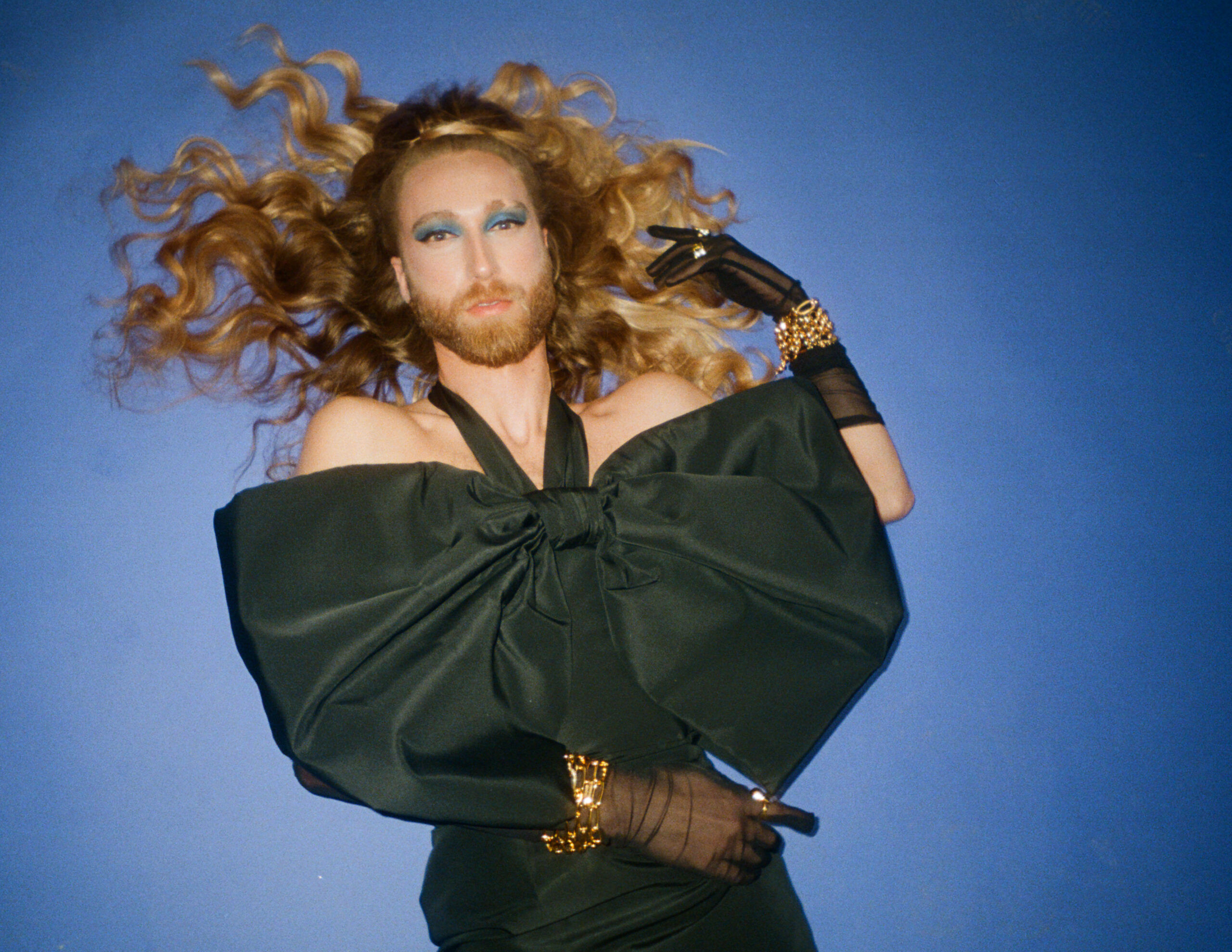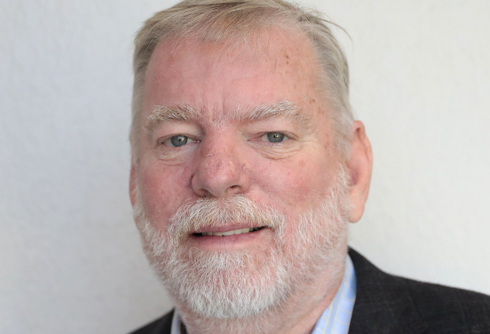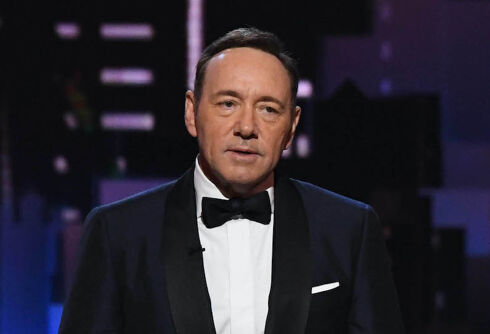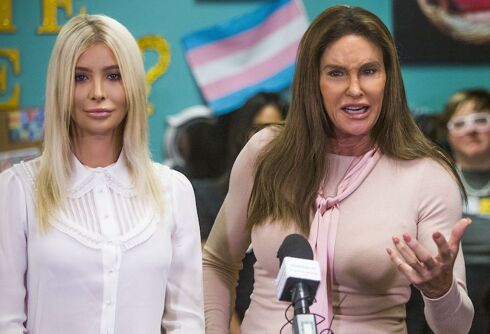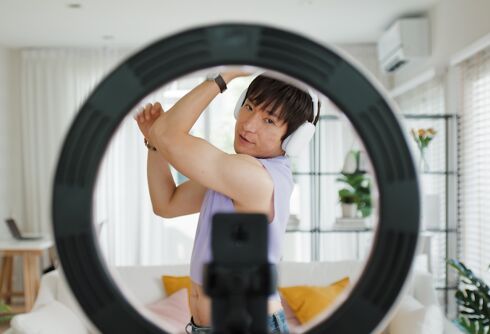Myles Sexton is often compared to Jonathan van Ness, but unlike the problematic Queer Eye hair expert, Sexton is Canadian. They’re a nice person. It’s in their bones.
A former fashion model, Sexton has occasionally branched out to highlighting brands online, but advocacy has become the goal for their popular TikTok and Instagram accounts.
Related:
HIV still plagues Black Americans at alarming rates. Could AI be the key to more equitable care?
Its National Black HIV/AIDS Awareness Day. As we celebrate Black History Month, let’s reaffirm our commitment to equitably fighting this illness.
Sexton, who is nonbinary, rocked an androgynous look throughout their fashion career and now educated others about the nonbinary experience, the importance of inclusive language, sobriety, and HIV information.
Never Miss a Beat
Subscribe to our newsletter to stay ahead of the latest LGBTQ+ political news and insights.
LGBTQ Nation sat down with Sexton for a few quick questions about their new calling, how it started, and their plans for the future. The interview has been lightly edited for clarity and brevity.
LGBTQ NATION: You got your start in fashion. So tell me about that.
MYLES SEXTON: I grew up in a tiny little farming town on the east coast of Canada, where, you know, there are under 2000 people. In high school, I was getting ready to become an archaeologist or a geologist. My uncle was a geologist, and I just was so fascinated by his work.
I got a job at a grocery store. One of the things that they would get me to do was the magazines, and I would have to put out the new ones and take down the old ones, but we just had to tear the cover off of the old ones. And then they were thrown out, so I would keep them. But it was the first time I had access; I was getting them for free. I remember looking at them and was captivated by the creativity. I think of the editorial work that was being shown in it and the androgyny that existed at that time for a lot of female models. I don’t know; something just changed inside of me, and I thought, I want to be a model. I want to try to have someone like me represented in this creative space because I was seeing fragments of it, but no one looked exactly like me. So, I sent some of my photos to a local modeling agency, and they signed me within a few weeks. It just took off from there.
I was finishing up high school and was already starting to do fashion shows and TV commercials. It kind of blew up from there.
Are you still walking the runway?
My relationship with modeling has changed a lot, and I do it when I can be who I am. I don’t take jobs anymore where I can’t be myself. I still do some stuff, but I think I’m just more picky about it, what I’m involved in, and the company that it is.
I’ve seen on some of your videos that you said you didn’t know anything at all about HIV until you tested positive. Now, you’re working with a charity, helping raise millions of dollars. What spawned that rapid transition?
I think there’s a lot of naive and uneducated baby Myles out there. I think a lot of people’s reference points to HIV is the 80s when we lost over 40 million people. So, I think the education system fails us because they show us this sort of fear-mongering tactic when it comes to HIV and sexual health.
Once I got diagnosed, as a part of my journey to reclaim my power over my stigma, shame, and misinformation, it was just like, “Okay, how do I use my voice to talk about this and show that I can be a successful, healthy person living with HIV and that the disease doesn’t stop me from living my life? My only reference point was sort of death and illness and people with sores, and you know, well, I’m not having sex with people that look like that. So, obviously, I can’t get HIV. But I was wrong.
When you tested positive, it was serious.
It had been in my body for quite a long time. That was the scary part because I was so sick for so long. And we couldn’t figure out what it was. I was in a monogamous relationship at that time. We were trying to figure out why I was so sick. I went and got an STI test done before we started dating, you know, committing to each other. I had been going to the same clinic since I moved there. I was a teenager when I moved to Toronto, and they were never taking blood; I would pee in a cup. And then they would do a swab. They never took my blood.
I’ve had to learn how to empower myself and other people now. For example, do your research and don’t look to a doctor as the be-all-end-all authority; you need to ask questions and know what you’re going into. Now, I interview my doctors to see if they’re the right fit for me. If they’re not using inclusive language or don’t have education in the realm of LGBTQIA+ people, I’m not interested.
What’s your work with CANFAR? What do you do?
They’re the largest funders for HIV research and access to care. I do a lot of public speaking with them; I host a lot of events to help fundraising. What’s super cool is that we fundraised enough money last year to open a rapid testing clinic where you get your results that evening or the next day.
I work a lot with them on bringing brands in from a social media perspective. I get the brands to donate and then create content for them to help. So, it’s been pretty cool getting to work with them. They also have an education platform for mental and sexual health and harm reduction, so I do a lot of content for them.
Speaking of businesses and brands, I know you do workshops on inclusion, language, and diversity issues with companies. What’s your top tip for businesses?
I present to businesses how to create safer spaces at work and be inclusive on their social media and marketing materials. I think the biggest thing is just getting comfortable with the language. That’s such a big one; it’s what makes people the most uncomfortable. We spend a lot of time in the training going through inclusive language and just teaching people that there’s so much gender-neutral language that we can use and are using. We’ve been trained not to use gender-neutral language. So it’s kind of about this relearning.
One of the things that I’ve always had an issue with trying to get people to grok is nonbinary people. They seem to understand trans people more because they see it more as going from A to B, but there’s a gray area in between there. What do you think most people don’t realize about nonbinary people?
They think it’s a new thing, but it’s not. Nonbinary, maybe as a term, is a new term that we’re using, but it has existed since the dawn of time. When we look at ancient histories, so many cultures have not limited themselves to these two colonial gender binaries. So it’s funny when people insist there are only men and women. No. We created that. We, as humans, created language; we make those constructs, so maybe we’re using a new term, like nonbinary, but there’s no reason we can’t figure out a term for people living between these binary genders.
You’re deliberate about making the viewers feel better about themselves while celebrating yourself. Is that a conscious decision? Or is that just you?
I think a bit of both. My mom always said, “You get more bees with honey,” and I truly believe that. I think there’s so much fear around the type of education I’m doing. I want people to feel safe, comfortable, and not intimidated. A lot of anger can come out around this type of education and shame and all these sorts of things. I want people to feel like they’re just having a conversation with their friends. They don’t feel intimidated, maybe. The feedback that I get from people is, “I hear what you’re saying.”
So if Instagram and TikTok shut down tomorrow, what would you do?
I think it would continue doing the work that I’m doing. I’ve always tried to balance my online life with on-the-ground work within local communities. So, if online disappeared, it would allow me to redirect more energy into the groundwork I’m doing.
There’s so much that I do that people don’t see. I’m okay with that; I try to be as involved as possible, and, you know, whether I post about it or not, that’s okay. It’s nice getting to a position where I feel like I can finally be an authority for a lot of this and help organize different things. I’m working on an educational networking sort of event for Pride. I organize a lot of sober events as well where we come together, we’re not drinking, but we’re doing an activity together, You know, changing a lot of these scripts that we have when we think to have fun, we need to drink or do drugs. I am trying behind the scenes to organize things like this. I hope I can continue to do more.
I have to admit, I’m a little disappointed with your answer. I thought you were going to say “geologist.” Thanks, Myles. This was a fun conversation.
It was a delight.




